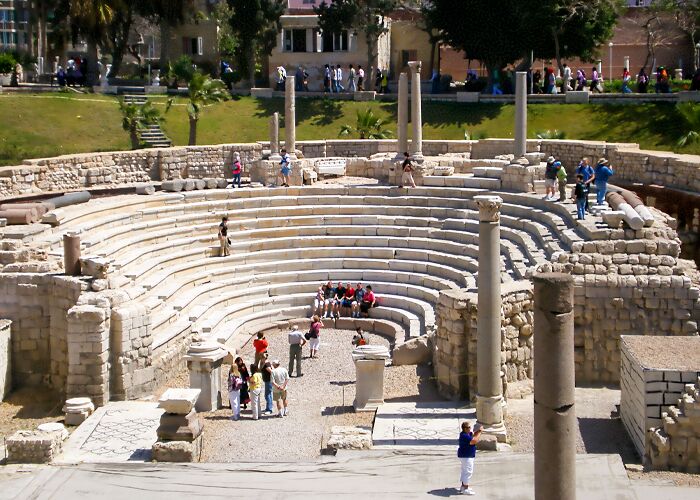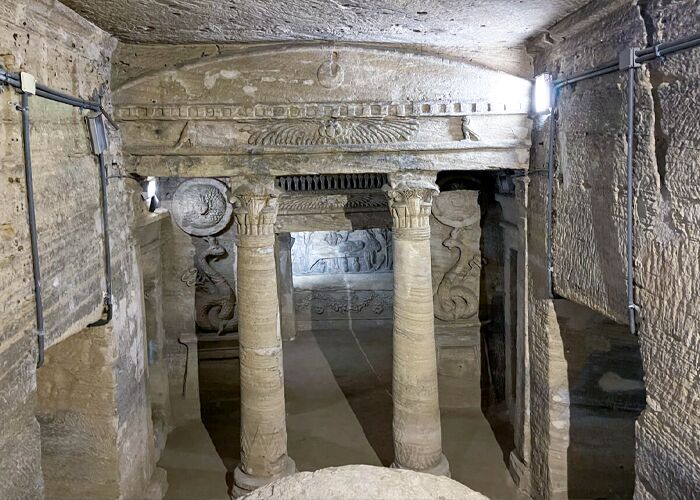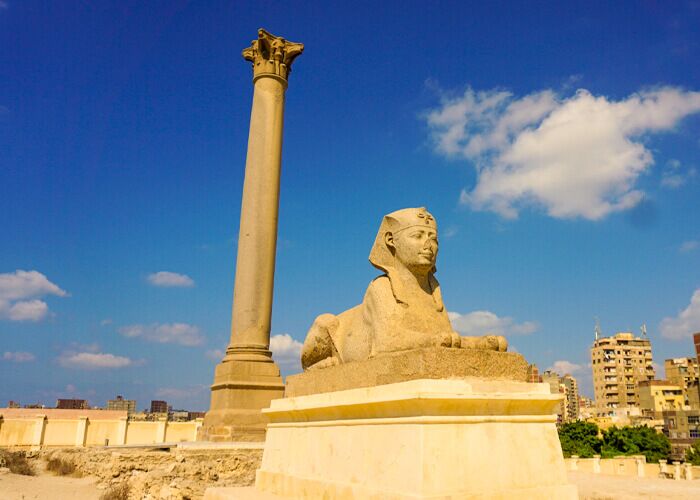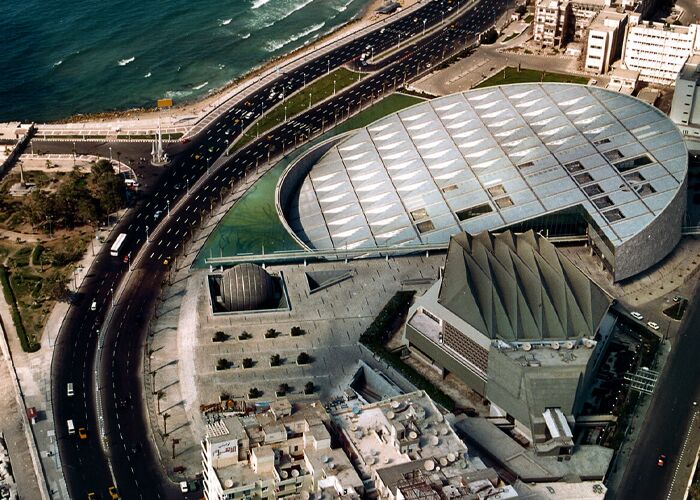This is what the word Kom EL Dekka means.
Named for a man who travelled through this area at the start of the 20th century. At the end of the 19th century, El Neweiry saw a lot of rubble and sand piles where the Mahmoudiya Canal had been dug. This canal connected Alexandria to the Nile River. He gave the area its well-known name because these piles looked like big banks.
The Roman Amphitheater in Alexandria, Egypt, was used for many different things.
When the amphitheatre was found ?
In 1960, the Roman amphitheatre of Alexandria was found by accident.
In 1960, when workers were clearing away a pile of dirt and sand to make room for a government building, they found some huge iron columns that suggested something might be buried below. Right after that, the Greco-Roman Museum and the Polish Excavation Mission to Egypt, which was sponsored by the University of Warsaw, started digging at the Kom El Dekka site. Not long after that, the digging turned up one of the most important things found in Egypt in the 20th century.
The Roman amphitheatre was used in different ways at different times.
Up until the 7th century AD, the Roman amphitheatre was used for things like concerts and plays. This was shown by the theater’s architecture, which shows that it was used in three different times: the, the, and the.
Over its long history and during different times, the amphitheatre has been used for many different things.
During the Roman era, it was used as an odeum, a place where musical events took place. At that time, the theatre had everything needed to put on a great show, like the dome that used to stand over the stage and the section of the orchestra.
During the time of the Byzantine Empire, the theatre was used as a place for important meetings like public assemblies and government summits.
Most likely, no one paid much attention to the Roman amphitheatre during the early Islamic period. It wasn’t found again until the middle of the 20th century, when it became one of the great historical sites in Alexandria.
The Roman Amphitheatre or Roman Theater is at Kom el-Dikka, which is in the middle of the city of Alexandria.
The amphitheater’s description
The Roman amphitheatre we see in Alexandria today was built in the 4th century AD. It is a good example of Greco-Roman architecture.
During the time that the Romans ruled Egypt, they built special covered theatres called amphitheatres for music events and poetry contests.
The amphitheatre has an audience area made of marble that is the same size as the extended wing and can hold 600 people.
The audience area is about 33 metres across and has 13 rows of white European marble seats.
The top part is a portico made of granite columns from Aswan, some of which are still standing today.
Roman numerals and letters were used to number the thirteen rows of Alexandria’s Roman amphitheatre so that the audience could be seated in different places for different events.
At the top of the audience area, there were five sections where important people and wealthy merchants sat during performances.
These compartments used to have domed ceilings that were supported by large granite columns to keep the sun and rain off the audience.
During performances, these domes were also used to amplify the sound of music and chants.
All of these buildings were lost in the earthquake that hit Alexandria in the sixth century AD.
Many other important buildings were also damaged by the earthquake, including the famous Pharos Lighthouse, which stood where the Qaitbey Fort is now.
The steps and rows of the Roman amphitheatre are built on a thick white limestone wall that is surrounded by another wall. The outer wall supported the inner wall through a series of arches. This was a common feature of Roman architecture from the 2nd to the 4th centuries.
In the middle of the building, where the orchestra used to be and where concerts used to be held. This part is held up by two big columns made of marble, and the floor has some of the most beautiful Roman mosaics.





